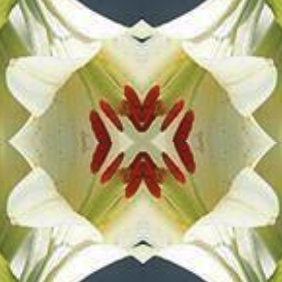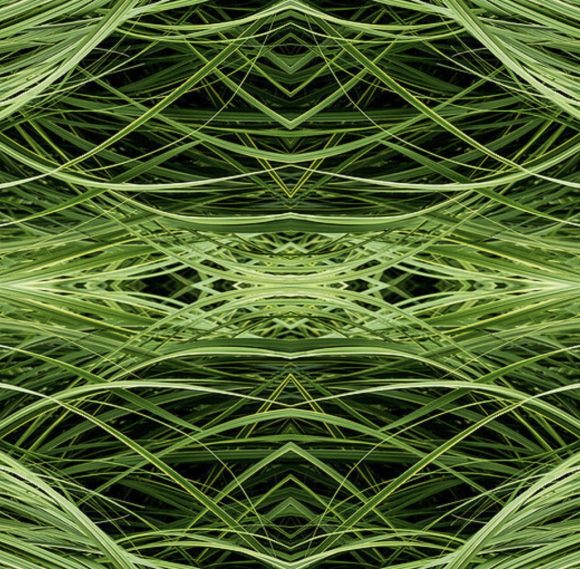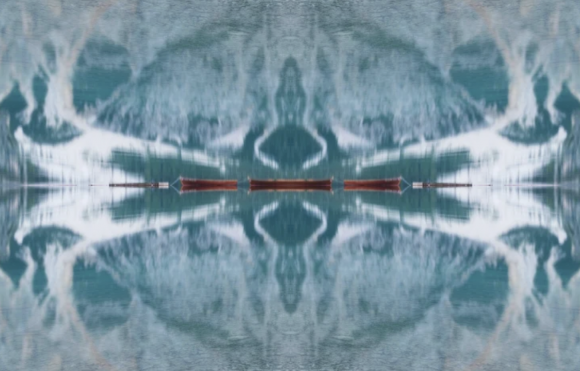[Note: This post has been superseded by an updated and more integrated article.]
I’m looking at a variety of possible answers to the guiding question (whether a descent to the underworld requires a compensating return trip — and if so, why) in the Jungian tradition. There is a particular difficulty with this question, however, and we might as well face it head-on.
The difficulty is that in the older strata of the tradition the style of exploring the question seems to be driven more by a collector’s mentality than by analytical investigation: Jung (in Psychology & Alchemy, for example, or in Symbols of Transformation) or Campbell (in The Hero with a Thousand Faces) tend to heap up examples from mediaeval writings or retellings of ancient myths, all of them mutually connected by similarities, and all of them arguably to do with the motive of venturing into the depths — but then they generally leave it at that. And although this procedure of “amplification” may have its uses in a concrete (therapeutic) analysis, it leaves a sense of arbitrariness and, more importantly, superficiality (rather than depth) when we investigate specific theoretical questions. Consequently, the important work of sorting out the relevant mythical motives from the unrelated (more removed ones) has taken up some space in the critical approaches of later writers (such as Hillman in The Dream and the Underworld) or writers who follow up a specific mythical narrative more in-depth, i.e., more psychologically in the proper sense (such as Stein does with the underworld endeavor of the Odyssee in In Midlife).

We will have to re-trace some of that critical work and then apply it back to Jung’s and Campbell’s older discussions in order to gain a deeper understanding of their views.
1. Following Hillman, we can start by distinguishing two clusters of myths which the older tradition frequently conflates: the nekyia, or journey to the underworld (in which we’re interested here, to the point of taking it to symbolize an entire way of living) vs. the hero’s Nachtmeerfahrt: the hike inside the belly of the whale. Hillman deploys some effort (though not always clearly distinguished from other themes which he mixes in) sorting these apart; Stein, by virtue of focusing on the Odysseus story, can avoid collusions from the hero’s journey cluster altogether and thus be much more insightful about the nekyia.
In Jung, on the other hand, the two clusters generally simply get assimilated. Take, for example, this passage from Symbols of Transformation:
[Um] sich eine neue oder ewige Jugend [zu erkämpfen] muß man aber, allen Gefahren trotzend, meistens in den Leib des Ungeheuers hinabsteigen (“Höllenfahrt”) und dort unten einige Zeit verweilen (“Nachtmeerfahrt”).
GW V, §374.
We can see here that for Jung, the motif of descent into the underworld and the motif of spending time in the belly of the beast (whale or dragon) are basically just variations in the imagery, but they all point to the same underlying psychodynamics: namely, a voluntary self-dissolution of the conscious ego and a ceding of control to the unconscious. The latter is represented by the depths (the underworld, ocean, …) and the beasts (dragon, whale, …) alike, and the mass of mythological examples that fill the pages of Symbols are intended to convince us that these are just so many variations of the same theme. In other words: for Jung, we’re talking about the same thing — whether we present it narratively as descent into hell or as getting swallowed by the whale. The differences in the images are insubstantial, they do not refer to different psychodynamics.
But this creates a problem when we now consider that the dragon (snake, whale, …) is also supposed to signify the Great Mother, particularly in her monstrous aspect. (The struggle against the Great Mother is, after all, the overarching theme in the hero myth, and thus one of the foundational premises in Symbols. It is also in the title of the very chapter from which I’ve just quoted: “Symbole der Mutter und der Wiedergeburt”.)
The problem is a common one with any associative style of thought: everything is based on similarity, and there is no plausible transitivity in similarity. From “A resembles B” and “B resembles C” it doesn’t generally follow that “A resembles C”, and even though the imagery of descent (the nekyia motive) and the imagery of the belly of the beast (the Nachtmeerfahrt) might both help us picture the self-dissolution dynamic of consciousness and temporary ceding of control to unconscious forces, it’s only the latter motif and not the former that brings forward any useful symbolism to work through the mother complex. (The later conflation of the underworld with “mother Earth” that Hillman criticizes in DU 35-43, 68-74 hadn’t happened yet at the time of writing of Symbols.) But the latter is the psychological issue at hand, and perhaps Jung should have been more discriminating and stuck to those motifs which clearly speak to that issue, rather than be over-inclusive and collect basically everything which shows a mere superficial resemblance.
(Although this is perhaps a little too unfair a criticism, given the pioneering nature of Jung’s early work; yet we must also consider that he claimed progressively more dominance for this “method” of amplification: whereas in the early work, he cautioned that the amplifying material would always have to be checked against the analysand’s response, in his later phases he dropped such methodological checks and balances and indulged, even in his broader psychological writings, in what I have above called a collector’s mentality — with the result that those writings overflow with endless museum exhibitions of mythical imagery and frequently lose any thread of thought in the process.)
2. While in Symbols Jung could have dropped, without any loss, all references to the underworld and confined himself to the Nachtmeerfahrt cluster, things are not so clear any more in the later Psychology & Alchemy. The main premise behind his line of thought there is no longer the hero’s journey and the struggle against the overpowering mother, but the archetypally delineated path of the individuation process (with the Shadow, Anima, Wise Old Man & co. now featuring prominently in the cast of characters). Jung tries to trace this process through an extensive dream series and collects the symbolism that can be found there (or read into it), and then interprets the alchemistic opus as referring to that same dynamics, mostly by pointing out similar imagery (see GW XII §§39, 40).
When it comes to the descent into the underworld, the narrative is generally one of bringing new life to a barren realm which, however, already carries the potential of such new life (but unconsciously). In Psychology & Alchemy the source is a story from the Visio Arislei about the sea king (GW XII, §§ 435-441; there is an interpretation of a different alchemistic text along the same lines in Mysterium Coniunctionis: GW XIV/I, §§ 183-205).
Insofern der König “exanimis”, das heißt entseelt, oder sein Land unfruchtbar ist, will das soviel heißen, als daß der verborgene Zustand ein solcher der Latenz und Potentialität ist. Das Dunkel und die Meerestiefe wollen nichts anderes bedeuten als den unbewußten Zustand eines Inhaltes […]. (GW XII, § 436)
The narrative is thus about a transformative psychodynamic, where unconscious potential is brought back into life — a process resembling therapy, personal growth out of an unproductive phase, or the like. Consequently, the motifs of death and rebirth, and the descent into the unconscious with the purpose of retrieval what is sunken there, are dominant in Jung’s amplification: “Der Todesfall ist […] der vollzogene Abstieg des Geistes in die Materie” (ibd.); “die Notwendigkeit des Abstieges in die dunkle Welt des Unbewußten […], [die Handlung] deren Ziel und Ende die Wiederherstellung des Lebens, die Auferstehung und Todüberwindung ist” (ibd.). Such stark imagery for this psychic transformation is apt, since the process is dangerous to the point of self-destruction:
Jene Scheu und jener Widerstand, die jeder natürliche Mensch gegen ein zu tiefes Versinken in sich selbst empfindet, sind im Grunde genommen die Angst vor der Hadesfahrt. […] vom seelischen Hintergrund, eben von jenem dunkeln, unbekannten Raum, [geht] eine faszinierende Anziehung aus, welche um so überwältigender zu werden droht, je weiter man eindringt. Die psychologische Gefahr, die dabei eintritt, ist eine Auflösung der Persönlichkeit […] (Ibd., §439)
What is missing, however, are the elements of adventure and confrontation of the mother complex from the hero myth, and therefore, strictly speaking, this appears to be a somewhat different dynamic than the one Jung looked at in Symbols. But that wasn’t his view: on the contrary, he explicitly links the dynamic he amplifies here with the hero myth (not least in the section title of the passage that starts at §437), and cross-references his discussion from Symbols. He also casually weaves several of the images from the Nachtmeerfahrt, and even the term itself, into his amplification of the alchemical story (see, for instance, §§ 436, 440). So it seems that for Jung, even in this later period, the alchemistical process of descent into the unconscious and transformation of unconscious contents into a larger Self (i.e., the individuation process) and the hero myth do seem to coincide — the nekyia and the Nachtmeerfahrt are still more or less expressions of the same process. (This impression is reinforced when we consider his selection of illustrations in these passages in Psychology & Alchemy, in addition to just the choice of words; viz. ill. 170-176 in particular.)




[…] tracked how Jung amalgamates the nekyia and the Nachtmeerfahrt, we are now in a better position to continue and understand the distinctions Hillman wants to […]